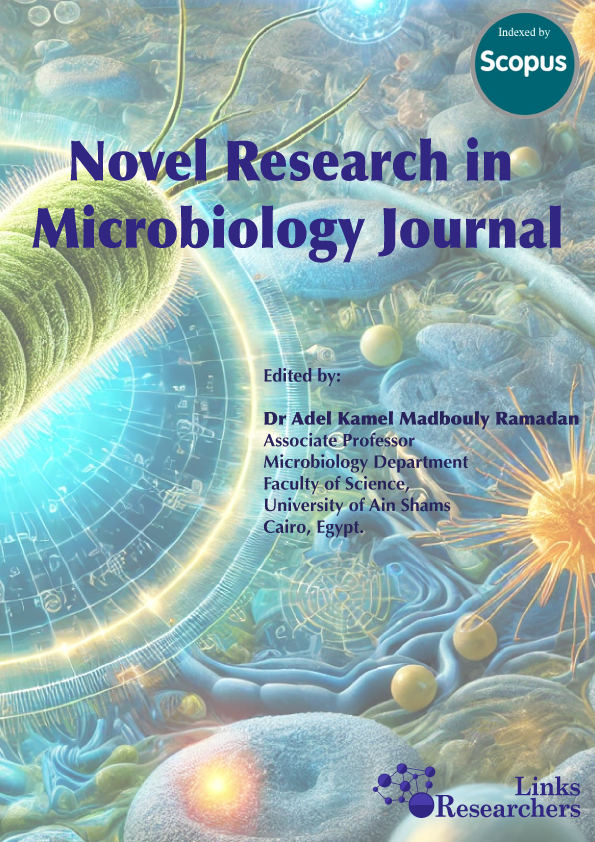Isolation, characterization, and detection of antibacterial activity of a bioactive compound produced by marine Bacillus sp. MH20 from Suez Bay, Egypt
Novel Research in Microbiology Journal (2019), 3(1): 258-270
Isolation, characterization, and detection of antibacterial activity of a bioactive compound produced by marine Bacillus sp. MH20 from Suez Bay, Egypt
Mahmoud Saber Kelany1*; Ehab Aly Beltagy2; Maha Abd El-Fattah Khalil3; Mohamed Ahmed El-Shenawy2; Wagih Abd El-Fattah El-Shouny3
ABSTRACT
This study focused on isolating and identifying a new bacterial strain from marine water and sediments of Suez bay, Timsah Lake, Egypt; capable of producing a bioactive secondary metabolite. Of the 552 bacterial isolates recovered, only 40 of these isolates exhibited antagonistic activities against different bacterial pathogens. A promising bacterium isolated from Suez bay marine water was identified as Bacillus sp. MH20 using 16S rRNA sequencing, and deposited in GenBank with accession number KM374670. This isolate showed sequence similarity of 88% to B. sonorensis strain NBRC 101234. Well-cut diffusion assay was adopted to determine the in vitro antibacterial activity of the active compound produced by this bacterium; whereas, GC-MS analysis was used to identify the components of this bioactive substance. GC-MS analysis showed that the active principle might be Phthalic acid, octyl 2-pentyl ester with retention time of 23.13 min. Crude extract of Bacillus sp. MK20 at a concentration of 200 mg/l exhibited LC50 of 2.5 ppm against Artemia salina. The aims of the current work were; to isolate and identify one of the promising bacterial strain from marine water, capable of producing bioactive antibacterial compound and evaluating its bio-toxicity, for its potential use in the control of bacterial human, animal and fish diseases.
To share on other social networks, click on any share button. What are these?






